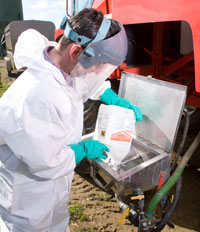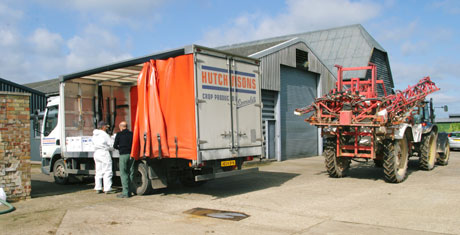Reducing crop inputs will hit profit opportunity

Growers have surprisingly little scope to cut input costs in wheat crops this spring, if they want to preserve profits, industry analysts are warning.
The cost of producing 1t of wheat this season had jumped from about £80/t to just under £120/t, according to figures from John Nix’s Farm Management pocketbook, Graham Redman of farm business consultant Andersons said at a Syngenta press briefing.
The huge increase in fertiliser prices was primarily responsible for that rise, he noted, while proportionally spray costs were at their lowest level in over a decade.
To remain profitable in 2009 growers had to do two main things, he suggested. “They need to understand and deal with their cost of production, and examine their grain marketing and use of technology, to maximise what they are getting for their grain.”
High yields remained key to profitability, he stressed, as it helped reduce costs of production by spreading fixed and variable costs over more tonnes.
That meant that while growers should be looking to mitigate costs, that must not be at the expense of income. “If you cut costs and it means your returns are cut even more, you lose profit. Remember, cutting costs that reduce yield increase all other costs per tonne.”

With yield driving profits, there is little scope to reduce inputs this season, industry analysts suggest
The temptation was to cut corners when profitability was tight, he recognised. “But wet grain costs more than drying fuel, even when fuel is expensive, and blackgrass costs more than ploughing, for example.”
Trimming costs that affected quality could also end up being expensive if it reduced how much growers got for grain, he added.
At a separate BASF discussion forum, Simon Ward of Increment agreed – with the possible exception of nitrogen – that growers should not cut back on inputs this season.
He pointed to the current average wheat price for March 2010 on the futures market since the position opened being higher than at any time over the past 10 years. “In terms of planning, the average input/output ratio is as good as you could expect it to be. For most inputs the return is spectacular, certainly compared with four years ago.”
He advised against cutting fungicide expenditure. “It is tempting to be mean with fungicides, but how much of last year’s yield increase was down to increased fungicide use [prompted by high grain prices]? Probably some,” he said.
There was some potential for reducing fertiliser inputs, he admitted, but suggested improving application accuracy would also help cover the extra investment growers had made.
Crop inputs
- Yield = profit
- Aim to reduce cost per tonne
- Little scope to reduce inputs
- Aim to use inputs with greatest return on investment
| Input selection will maximise profit |

